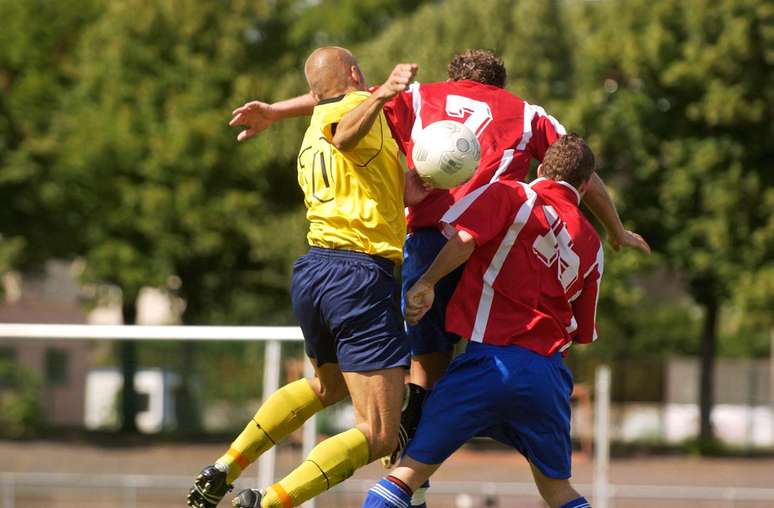According to the former athlete’s widow, he lived for 18 years with “boxing dementia”, as the disease was known. Maguila died at the age of 66.
Former boxer José Adilson Rodrigues dos Santos, known as Maguila, has died at the age of 66, according to his family this Thursday (24/10).
Born in Aracaju (SE), Maguila won several Brazilian and South American boxing titles and also a world title, in the heavyweight category, of the World Boxing Federation, in 1995.
The former athlete had been living for years with chronic traumatic encephalopathy, also known as “boxing dementia”, a term now out of use.
In an interview with TV Record, Maguila’s widow, Irani Pinheiro, said he had been living with the condition for 18 years and, last month, a nodule was discovered in the boxer’s lung. However, it was not possible to perform a biopsy on the nodule.
Chronic traumatic encephalopathy affects people who have suffered repeated blows to the head throughout their lives, such as boxers and football players.
But, after all, what is chronic traumatic encephalopathy? And what are the ways to avoid this problem?
The question is frequency
Dr. Roberta Diehl Rodriguez, from the Department of Neurology at the Faculty of Medicine of the University of São Paulo (USP), explains that this disease began to be studied more thoroughly recently, about 15 years ago.
“And we are able to make a definitive diagnosis of chronic traumatic encephalopathy only after the death of the individual, through analysis of the brain,” he told BBC News Brasil in 2022.
From what is known so far, the condition can manifest itself in several ways.
Some have Alzheimer’s-like symptoms, such as memory loss and difficulty completing reasoning.
In others, however, the discomfort is closer to psychiatric conditions, such as bipolar disorder, in which mood changes occur.
Cases are also described in which the patient has developed a strong addiction to gambling, alcohol or other drugs.
“The most recent studies also show us that, more important than the number or force of blows, a fundamental aspect of the disease is the interval between traumas,” reports Rodriguez.
In other words: if the individual suffers a head injury and, a few days later, experiences a similar accident, this would be a major red flag.
Perhaps, such close quarters hits don’t give the brain time to recover well from that first impact, which further worsens the lifelong effects it will have.
This is why, in fact, athletes in some sports are more likely to suffer from chronic traumatic encephalopathy: the very nature of the profession predisposes them to taking blows to the skull.
First on this list are fighters, since the goal of the sport is precisely to hit the opponent’s head with punches and kicks – hence the old term “boxing dementia”.
Big names in boxing, such as Muhammad Ali and Éder Jofre, for example, had neurological problems at the end of their lives.
Rugby and American football players are also more likely to develop the problem, as these sports feature many bumps and bumps.
Finally, football professionals complete the group. Since crosses and aerial balls are an important feature of the sport, skull hits are frequent.
Brain in disarray
But what happens to the head immediately after the blow?
To understand this mechanism it is first necessary to know a protein called TAU.
“It helps maintain the structure of neurons and facilitates the transport of nutrients between cells,” summarizes Rodriguez.
However, repeated hits appear to alter some of this neuronal balance.
When a head accident occurs, this protein breaks down and inflammation occurs.
And this is where the chronic aspect of the beats comes into play.
“If another blow comes right after, the brain can’t recover from the first one and that protein starts to deposit there,” says the neurologist.
“As time passes, these abnormal aggregates of TAU proteins begin to impair the passage of information and nutrients in neurons,” he adds.
And this, over the course of several decades, can culminate in great difficulties for the proper functioning of the brain.
It is worth mentioning that these same TAU protein tangles are observed in other neurological diseases, such as Alzheimer’s itself.
In chronic traumatic encephalopathy, however, it is possible to identify a factor behind the accumulation of this substance: repeated blows to the head.
Rodriguez says USP has a large brain bank, which is preserved for scientific research.
“In one study, I evaluated 1,157 of these organs that belonged to people who had no history of being a professional athlete.”
“Of these, we found chronic traumatic encephalopathy in only seven men,” he continues.
“I subsequently managed to speak to the family of one of them and discovered that the individual was the goalkeeper of an amateur team, for which he played at the weekend,” he reveals.
*This text was used as a basis a 2022 BBC News Brasil story on chronic traumatic encephalopathy and has been updated with the current context
Source: Terra
Ben Stock is a lifestyle journalist and author at Gossipify. He writes about topics such as health, wellness, travel, food and home decor. He provides practical advice and inspiration to improve well-being, keeps readers up to date with latest lifestyle news and trends, known for his engaging writing style, in-depth analysis and unique perspectives.







